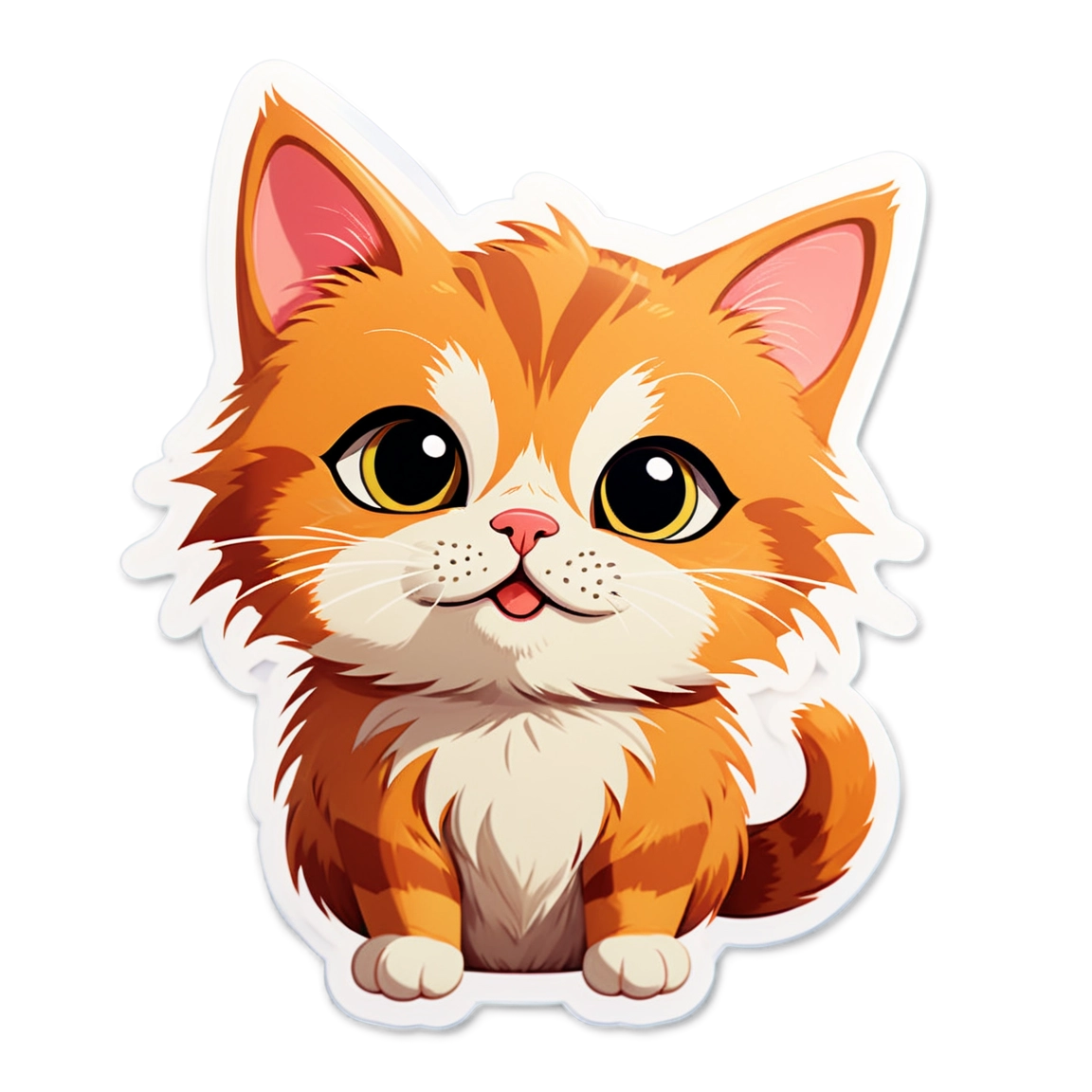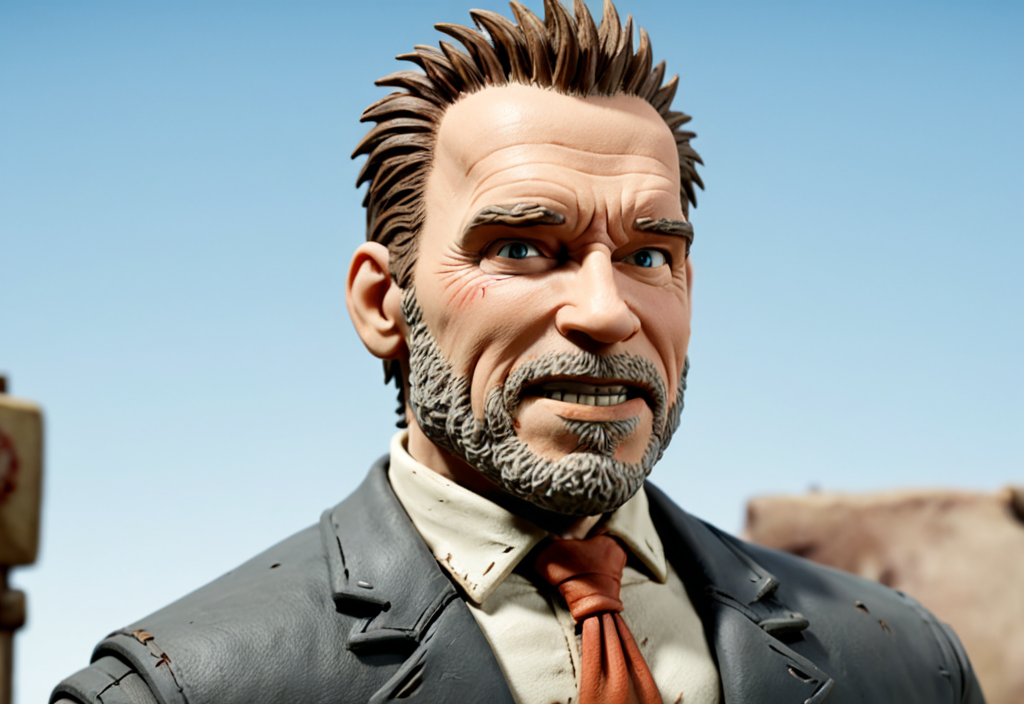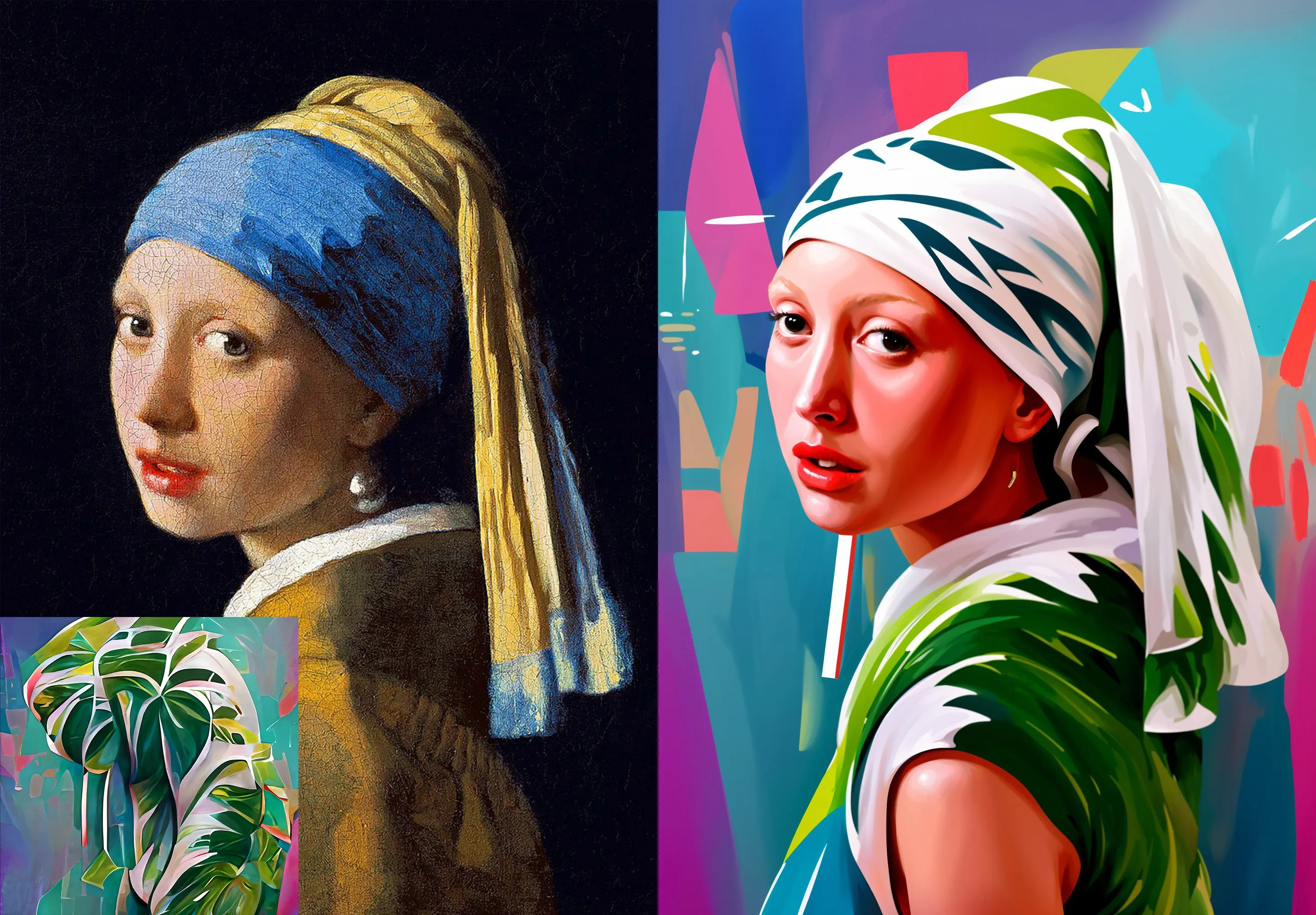face-to-sticker
Maintainer: fofr

789

| Property | Value |
|---|---|
| Model Link | View on Replicate |
| API Spec | View on Replicate |
| Github Link | View on Github |
| Paper Link | No paper link provided |
Get summaries of the top AI models delivered straight to your inbox:
Model overview
The face-to-sticker model is a tool that allows you to turn any face into a sticker. This model is created by the Replicate user fofr, who has also developed similar AI models like sticker-maker, face-to-many, and become-image. These models all focus on transforming faces into different visual styles using AI.
Model inputs and outputs
The face-to-sticker model takes an image of a person's face as input and generates a sticker-like output. You can also customize the model's output by adjusting parameters like the prompt, steps, width, height, and more.
Inputs
- Image: An image of a person's face to be converted into a sticker
- Prompt: A text description of what you want the sticker to look like (default is "a person")
- Negative prompt: Things you do not want to see in the sticker
- Prompt strength: The strength of the prompt, with higher numbers leading to a stronger influence
- Steps: The number of steps to take when generating the sticker
- Width and height: The size of the output sticker
- Seed: A number to fix the random seed for reproducibility
- Upscale: Whether to upscale the sticker by 2x
- Upscale steps: The number of steps to take when upscaling the sticker
- Ip adapter noise and weight: Parameters that control the influence of the IP adapter on the final sticker
Outputs
- The generated sticker image
Capabilities
The face-to-sticker model can take any face and transform it into a unique sticker-like image. This can be useful for creating custom stickers, emojis, or other graphics for social media, messaging, or other applications.
What can I use it for?
You can use the face-to-sticker model to create custom stickers and graphics for a variety of purposes, such as:
- Personalizing your messaging and social media with unique, AI-generated stickers
- Designing custom merchandise or products with your own face or the faces of others
- Experimenting with different visual styles and effects to create new and interesting graphics
Things to try
One interesting thing to try with the face-to-sticker model is to experiment with different prompts and parameters to see how they affect the final sticker. Try prompts that evoke different moods, emotions, or visual styles, and see how the model responds. You can also play with the upscaling and IP adapter settings to create more detailed or stylized stickers.
This summary was produced with help from an AI and may contain inaccuracies - check out the links to read the original source documents!
Related Models

sticker-maker

257
The sticker-maker model is a powerful AI tool that enables users to generate high-quality graphics with transparent backgrounds, making it an ideal solution for creating custom stickers. Compared to similar models like AbsoluteReality V1.8.1, Reliberate v3, and any-comfyui-workflow, the sticker-maker model offers a streamlined and user-friendly interface, allowing users to quickly and easily create unique sticker designs. Model inputs and outputs The sticker-maker model takes a variety of inputs, including a seed for reproducibility, the number of steps to use, the desired width and height of the output images, a prompt to guide the generation, a negative prompt to exclude certain elements, the output format, and the desired quality of the output images. The model then generates one or more images with transparent backgrounds, which can be used to create custom stickers. Inputs Seed**: Fix the random seed for reproducibility Steps**: The number of steps to use in the generation process Width**: The desired width of the output images Height**: The desired height of the output images Prompt**: The text prompt used to guide the generation Negative Prompt**: Specify elements to exclude from the generated images Output Format**: The format of the output images (e.g., WEBP) Output Quality**: The quality of the output images, from 0 to 100 (100 is best) Number of Images**: The number of images to generate Outputs Array of image URLs**: The generated images with transparent backgrounds, which can be used to create custom stickers Capabilities The sticker-maker model is capable of generating a wide variety of sticker designs, ranging from cute and whimsical to more abstract and artistic. By adjusting the input prompts and settings, users can create stickers that fit their specific needs and preferences. What can I use it for? The sticker-maker model is a versatile tool that can be used for a variety of applications, such as creating custom stickers for personal use, selling on platforms like Etsy, or incorporating into larger design projects. The transparent backgrounds of the generated images make them easy to incorporate into various designs and layouts. Things to try To get the most out of the sticker-maker model, you can experiment with different input prompts and settings to see how they affect the generated stickers. Try prompts that evoke specific moods or styles, or mix and match different elements to create unique designs. You can also try generating multiple stickers and selecting the ones that best fit your needs.
Updated Invalid Date

face-to-many

11.9K
The face-to-many model is a versatile AI tool that allows you to turn any face into a variety of artistic styles, such as 3D, emoji, pixel art, video game, claymation, or toy. Developed by fofr, this model is part of a larger collection of creative AI tools from the Replicate platform. Similar models include sticker-maker for generating stickers with transparent backgrounds, real-esrgan for high-quality image upscaling, and instant-id for creating realistic images of people. Model inputs and outputs The face-to-many model takes in an image of a person's face and a target style, allowing you to transform the face into a range of artistic representations. The model outputs an array of generated images in the selected style. Inputs Image**: An image of a person's face to be transformed Style**: The desired artistic style to apply, such as 3D, emoji, pixel art, video game, claymation, or toy Prompt**: A text description to guide the image generation (default is "a person") Negative Prompt**: Text describing elements you don't want in the image Prompt Strength**: The strength of the prompt, with higher numbers leading to a stronger influence Denoising Strength**: How much of the original image to keep, with 1 being a complete destruction and 0 being the original Instant ID Strength**: The strength of the InstantID model used for facial recognition Control Depth Strength**: The strength of the depth controlnet, affecting how much it influences the output Seed**: A fixed random seed for reproducibility Custom LoRA URL**: An optional URL to a custom LoRA (Learned Residual Adapter) model LoRA Scale**: The strength of the custom LoRA model Outputs An array of generated images in the selected artistic style Capabilities The face-to-many model excels at transforming faces into a wide range of artistic styles, from the detailed 3D rendering to the whimsical pixel art or claymation. The model's ability to capture the essence of the original face while applying these unique styles makes it a powerful tool for creative projects, digital art, and even product design. What can I use it for? With the face-to-many model, you can create unique and eye-catching visuals for a variety of applications, such as: Generating custom avatars or character designs for video games, apps, or social media Producing stylized portraits or profile pictures with a distinctive flair Designing fun and engaging stickers, emojis, or other digital assets Prototyping physical products like toys, figurines, or collectibles Exploring creative ideas and experimenting with different artistic interpretations of a face Things to try The face-to-many model offers a wide range of possibilities for creative experimentation. Try combining different styles, adjusting the input parameters, or using custom LoRA models to see how the output can be further tailored to your specific needs. Explore the limits of the model's capabilities and let your imagination run wild!
Updated Invalid Date

become-image

218
The become-image model, created by maintainer fofr, is an AI-powered tool that allows you to adapt any picture of a face into another image. This model is similar to other face transformation models like face-to-many, which can turn a face into various styles like 3D, emoji, or pixel art, as well as gfpgan, a practical face restoration algorithm for old photos or AI-generated faces. Model inputs and outputs The become-image model takes in several inputs, including an image of a person, a prompt describing the desired output, a negative prompt to exclude certain elements, and various parameters to control the strength and style of the transformation. The model then generates one or more images that depict the person in the desired style. Inputs Image**: An image of a person to be converted Prompt**: A description of the desired output image Negative Prompt**: Things you do not want in the image Number of Images**: The number of images to generate Denoising Strength**: How much of the original image to keep Instant ID Strength**: The strength of the InstantID Image to Become Noise**: The amount of noise to add to the style image Control Depth Strength**: The strength of the depth controlnet Disable Safety Checker**: Whether to disable the safety checker for generated images Outputs An array of generated images in the desired style Capabilities The become-image model can adapt any picture of a face into a wide variety of styles, from realistic to fantastical. This can be useful for creative projects, generating unique profile pictures, or even producing concept art for games or films. What can I use it for? With the become-image model, you can transform portraits into various artistic styles, such as anime, cartoon, or even psychedelic interpretations. This could be used to create unique profile pictures, avatars, or even illustrations for a variety of applications, from social media to marketing materials. Additionally, the model could be used to explore different creative directions for character design in games, movies, or other media. Things to try One interesting aspect of the become-image model is the ability to experiment with the various input parameters, such as the prompt, negative prompt, and denoising strength. By adjusting these settings, you can create a wide range of unique and unexpected results, from subtle refinements to the original image to completely surreal and fantastical transformations. Additionally, you can try combining the become-image model with other AI tools, such as those for text-to-image generation or image editing, to further explore the creative possibilities.
Updated Invalid Date

pulid-base

1
The pulid-base model is a face generation AI developed by fofr at Replicate. It uses SDXL fine-tuned checkpoints to generate images from a face image input. This model can be particularly useful for tasks like photo editing, avatar creation, or artistic exploration. Compared to similar models like stable-diffusion, pulid-base is specifically focused on face generation, while pulid is a more general ID customization model. The sdxl-deep-down model from the same creator is also fine-tuned on underwater imagery, making it suitable for different use cases. Model inputs and outputs The pulid-base model takes a face image as the primary input, along with a text prompt, seed, size, and various other options to control the style and output format. It then generates one or more images based on the provided inputs. Inputs Face Image**: The face image to use for the generation Prompt**: The text prompt to guide the image generation Seed**: Set a seed for reproducibility (random by default) Width/Height**: The size of the output image Face Style**: The desired style for the generated face Output Format**: The file format for the output images Output Quality**: The quality level for the output images Negative Prompt**: Text to exclude from the generated image Checkpoint Model**: The model checkpoint to use for generation Outputs Output Images**: One or more generated images based on the provided inputs Capabilities The pulid-base model can generate photo-realistic face images from a combination of a face image and a text prompt. It can be used to create unique, personalized images by blending the input face with different styles and scenarios described in the prompt. The model is particularly adept at maintaining the identity and features of the input face while generating diverse and visually compelling output images. What can I use it for? The pulid-base model can be a powerful tool for a variety of applications, such as: Avatar and character creation**: Generate unique, custom avatars or character designs for games, social media, or other digital experiences. Face editing and enhancement**: Enhance or modify existing face images, such as by changing the expression, style, or environment. Digital art and illustration**: Combine face images with imaginative prompts to create surreal, dreamlike, or stylized artworks. Prototyping and visualization**: Quickly generate face images to visualize concepts, ideas, or designs involving human subjects. By leveraging the face-focused capabilities of the pulid-base model, you can create a wide range of personalized and visually striking images to suit your needs. Things to try Experiment with different combinations of face images, prompts, and model parameters to see how the pulid-base model can transform a face in unexpected and creative ways. Try using the model to generate portraits with specific moods, emotions, or artistic styles. You can also explore blending the face with different environments, characters, or fantastical elements to produce unique and imaginative results.
Updated Invalid Date